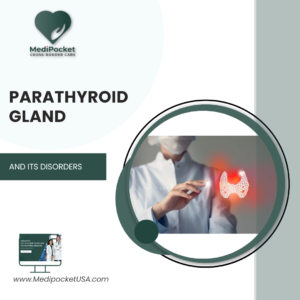Childhood cancer or Pediatric Cancer is a significant health concern globally, with India experiencing an alarming rise in its incidence over the past two to three decades. The incidence rates range from approximately 38 to 124 cases per million children, resulting in over 50,000 new cases diagnosed annually. Among the various types of childhood cancers, leukemia, lymphomas, and brain tumors emerge as the most prevalent, casting a shadow over the well-being of young individuals.
Another extremely challenging problem in pediatric oncology is brain tumors. These tumors, which originate in the brain or spinal cord, can have a major effect on both mental and physical abilities. Children’s brain tumors require unique care and experience to diagnose and treat because of the developing brain’s fragility.

Here are some of the types of Childhood cancers:
Leukemia:
One of the most prevalent cancers in children is leukemia, a disease that affects the bone marrow and blood cells. Leukemia is characterized by the production of abnormal white blood cells, or leukocytes, in the bone marrow that crowd out good blood cells and weaken the immune system’s capacity to fight diseases. While leukemia comes in many forms, acute lymphoblastic leukemia (ALL) and acute myeloid leukemia (AML) are the two most common varieties in children.
75–80% of pediatric leukemia cases are acute lymphoblastic leukemia (ALL), making it the most prevalent form of the disease. It normally progresses quickly, with symptoms frequently emerging suddenly. Although less frequent in children, acute myeloid leukemia (AML) tends to be more aggressive and advances quickly in the absence of treatment.
Symptoms:
Depending on the kind of leukemia and the stage of the illness, a child’s symptoms can change. Typical indications and manifestations include:
- Fatigue and Weakness: Children with leukemia may feel weak and tired even with adequate rest.
- Frequent illnesses: Children with leukemia are more prone to illnesses like the flu, the common cold, and bacterial infections because the disease weakens the immune system.
- Pale Skin: Children with leukemia may have pale skin or a yellowish hue due to anemia, a disorder marked by a low red blood cell count.
- Easy Bruising and Bleeding: Low platelet counts caused by leukemia can cause nosebleeds, bleeding gums, and easy bruising.
- Bone and Joint pain: Children with leukemia may have discomfort in their bones or joints, particularly in the long bones of their arms and legs.
- Enlarged Spleen or Lymph Nodes: Leukemia can result in enlargement of the spleen, liver, or lymph nodes, which can cause discomfort or swelling in the underarms, neck, or belly.
- Fever: Infections linked to weakened immune systems or leukemia may manifest as persistent or recurrent fevers without a clear cause.
- Poor Appetite and Weight Loss: As a result of the disease and therapy, children with leukemia may have a decrease in appetite and unintended weight loss.
- Headaches or Vision Changes: If leukemia affects the central nervous system, it may occasionally result in headaches, vision abnormalities, or seizures.
Lymphoma:
One kind of cancer that affects the lymphatic system, an essential component of the immune system, is lymphoma. Although lymphoma is more typically diagnosed in adults, it can also occur, albeit less frequently, in youngsters. Children’s lymphomas are generally classified as non-Hodgkin lymphoma (NHL) or Hodgkin lymphoma (HL). The white blood cells called lymphocytes that are present in the bone marrow, spleen, lymph nodes, and thymus, are the source of these tumors.
Non-Hodgkin Lymphoma:
In children, non-Hodgkin lymphoma (NHL) occurs more frequently than Hodgkin lymphoma. The body’s lymph nodes, tonsils, thymus, bone marrow, and other organs are among the places it might develop. NHL is divided into several subgroups, each with unique traits and therapeutic modalities.
Hodgkin Lymphoma:
Although it is less common in children than in adults, pediatric lymphoma instances still largely consist of cases of Hodgkin lymphoma (HL). Reed-Sternberg cells, which are big, aberrant cells seen in lymph nodes impacted by the illness, are a hallmark of HL. If left untreated, it usually begins in the lymph nodes in the chest or neck and can spread to other areas of the body.
Symptoms:
Children’s lymphoma symptoms can differ according to the kind and location of the illness. Typical signs and symptoms could be:
- Enlarged lymph nodes: Swollen lymph nodes, which can be firm to the touch and unpleasant, are one of the telltale symptoms of lymphoma. You can feel these swollen lymph nodes beneath the skin in the groin, armpits, and neck.
- Unexplained weight loss: Children with lymphoma may naturally lose a substantial amount of weight. This can be because the malignant cells in the body are altering the metabolism.
- Fever and intense sweats at night: Prolonged fever, particularly at night, and intense sweats at night may be signs of lymphoma. These symptoms can interfere with a child’s sleep and general well-being, and they are frequently accompanied by chills.
- Weakness and exhaustion: Because of the immune system’s reaction to the malignant cells, lymphoma patients may experience significant weakness and exhaustion. Children may have persistent fatigue and low energy, which makes it difficult for them to participate in everyday activities.
- Abdominal pain and swelling: Children may have bloating, edema, or abdominal pain if their lymphoma affects abdominal organs such as the liver or spleen.
- Symptoms related to the respiratory system: Chest lymphomas can induce symptoms including coughing, dyspnea, or chest pain.
Pediatric Cancer Treatment in the United States:
In terms of treating pediatric cancer, the US leads the globe in providing some of the most cutting-edge and extensive care options. The US offers excellent pediatric cancer treatment due to several variables, including prestigious facilities, state-of-the-art techniques, and a dedication to research and development.
Above all, the United States is home to world-class pediatric cancer treatment facilities and hospitals that specialize in offering individualized care to young patients with cancer. Organizations that are well-known throughout the world for their knowledge, cutting-edge facilities, and multidisciplinary approach to healthcare include St. Jude Children’s Research Hospital, Dana-Farber Cancer Institute, and Children’s Hospital of Philadelphia. Teams of exceptionally talented surgeons, nurses, support personnel, and oncologists work in these facilities to provide the best results possible.
To minimize treatment-related side effects over the long term while optimizing therapeutic advantages, sustainable therapy options for pediatric cancer have come under increased scrutiny in recent years. New approaches like customized medicine—which uses genomic sequencing to customize treatment regimens based on each patient’s distinct genetic composition—have been made possible by research endeavors in the US. Additionally, improvements in survivorship programs and supportive care are meant to improve the quality of life for kids who have survived cancer while lowering their chance of long-term consequences.
Premium Cancer Care with MediPocket USA:
Even with the advancements in pediatric cancer care in the US, many children throughout the world still struggle to have access to these cutting-edge treatments and knowledge. Herein lies the critical role that groups such as MediPocket USA play in bridging the knowledge gap that exists between the world’s top oncologists and youngsters. MediPocket USA ensures that children worldwide receive the best care possible for pediatric cancer by connecting patients with top specialists and facilitating access to state-of-the-art treatment options through their vast network of healthcare providers and medical tourism expertise.
In conclusion, the US sets the standard for treating pediatric cancer because of its top-notch hospitals, cutting-edge treatments, and dedication to the advancement of oncology. With organizations like Medipocket USA working to facilitate global access to these resources, children facing cancer can receive the highest standard of care, regardless of their location.







